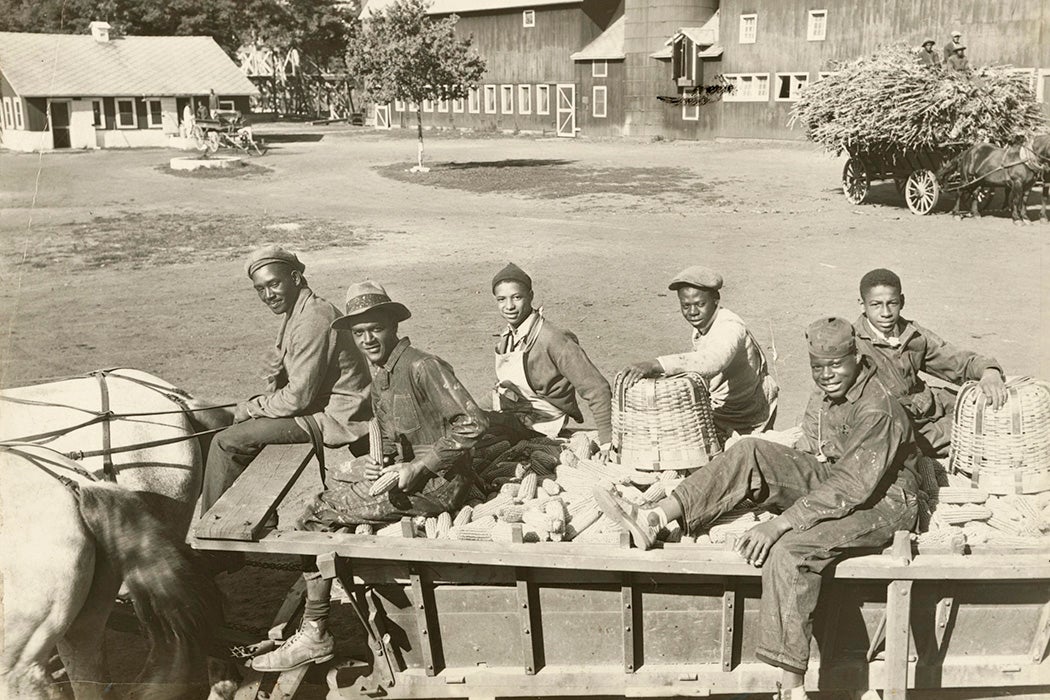After the Supreme Court declared racially segregated schools unconstitutional in 1954, eyes in New Jersey turned to the Bordentown Manual Training and Industrial School for Colored Youth. The school dropped the “Colored Youth” of its title, but it was unable to attract white students. The state’s governor himself ordered it closed in the spring of 1955—in the face of strong protest from the school community.
Once the pride of working class Black families in southern New Jersey, the Bordentown School was overtaken by the wave of the struggle for integration.
“Blacks in New Jersey had been debating the merits of school integration for more than half a century, especially in the southern region of the state, where whites aggressively enforced separate schools,” writes education historian Zoë Burkholder.
School desegregation is usually told as a story of the South, but northern public schools were segregated as well through classroom arrangement, zoning, and transfer policies. Burkholder details the two main ways northern segregation was challenged: the political and legal fight for integration, which slogged its way through the court system, or accepting the notion that “separate but equal” could be made to work. Bordentown became a model of the latter strategy, and for a while, it was one of the best of the Jim Crow schools.
“Fondly called the ‘Tuskegee of the North,’ the school had a renowned [B]lack faculty, a charming brick campus, and a long history of serving the educational needs of [B]lack adolescents,” explains Burkholder.
Bordentown was started in 1886 as a private school for Black children. It was incorporated into the state’s public school system in 1894. (The state’s 1881 statute prohibiting segregated schools was one of the first such laws in the country—and one of the first to be almost completely ignored.)
Just before World War I, Bordentown was tracked into a vocational “manual training and industrial” program, with an emphasis on farming for boys and domestic arts for girls. The principal strongly disagreed with the move away from academics and resigned in protest. But the state of New Jersey agreed with Booker T. Washington of the famed Tuskegee Institute: Black students should be educated for manual, service, and other working-class jobs, not prepared for college. A new principal in line with Washington’s Tuskegee ideal came on in 1915 and ran the school until 1950.
With Black teachers unlikely to get jobs teaching white students before World War II, Bordentown could attracted the best talent. In 1926, for example, the faculty had graduates of Amherst, Bates, Dartmouth, Fisk, Harvard, Howard, Radcliffe, Rutgers, and Wellesley. From 1928 on, students could pursue a vocational certificate or combine that with a high school diploma.
“By 1930, Bordentown School had earned a national reputation as a leading educational, athletic, and cultural institution for [B]lack youth,” writes Burkholder.
In particular, students who had experienced the racism of white teachers and white students in mixed-race schools loved the place. Even one the nation’s strongest critics of industrial education, W. E. B. Du Bois, admired the 400-acre campus, its message of racial uplift, and its principal (a long-time friend).
But World War II revealed that Bordentown’s “industrial” training was woefully inadequate to the requirements of producing a modern labor force. A nation at war—a nation that suddenly needed Black workers—needed more than farmers, laundry workers, and maids.
Weekly Newsletter
“Support for separate schools among northern black parents, students, and teachers,” strong in the 1930s, began to slip as the war sparked a “renewed and revitalized civil rights movement” that prioritized integration.
By the time New Jersey’s state constitution was revised to outlaw segregation in public eduction (1947), Bordentown was no longer the powerhouse it had been. Enrollment dwindled by almost half in its last decade as the school took on a remedial role. Students, parents, and teachers were sorry to see it closed, but others in the state were glad to see the end of the southern-style, Jim Crow manual school.
The fight over school segregation continues in New Jersey. A case challenging the state’s public school system, which today ranks seventh worse for Latinx students and the sixth worse for Black students, is expected to be decided soon.







